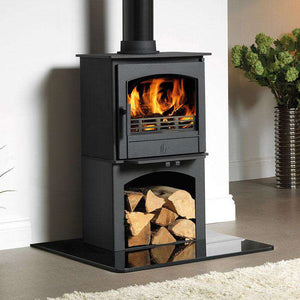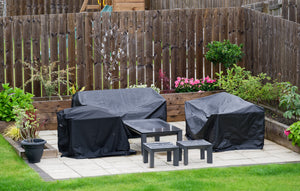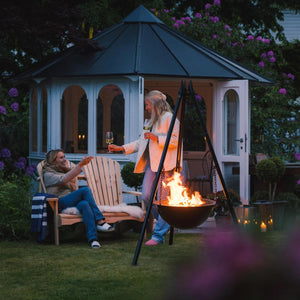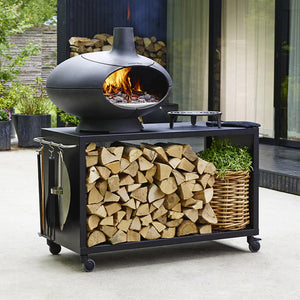Are Wood Burning Stoves Eco-Friendly?

If you’re in the process of considering the addition of a brand-new wood burning stove to your home in preparation for the winter months, it may have crossed your mind whether or not a classic wood burner is as good for the environment as everyone claims them to be! Our blog tells all on how green the wood burner actually is and how to make sure you’re using your wood burner in the eco-friendliest manner possible!
People are currently more educated and informed than ever before, often consciously opting for more sustainable living habits and when it comes to heating the home, this is no exception. The prospect of relying on a sustainable energy source to heat your home at a potentially lower cost than energy from the central grid is an appealing concept to many. When this is combined with a wood burner making a perfect cosy centrepiece for a room, along with many other positive contributors (have a look at our top 10 reasons to buy a wood burning stove for more!), it makes it easy to see why the thought of a brand-new wood burner is an attractive choice for many.
In some urban areas where air quality can be poor, there are often regulations regarding how, where and when you can use a wood burning stove, in an attempt to control smoke levels in those areas. Firstly, Carbon Dioxide is not the problem. Wood is actually a carbon neutral source of energy; a tree absorbs a significant amount of carbon dioxide through its lifecycle, which is then balanced by the carbon dioxide emitted by the wood when it burns. If you were to burn fossil fuels instead, significantly more carbon dioxide would be released in to the atmosphere and do far more harm to the environment than burning wood ever would. However, when in use, wood burning stoves do emit PM2.5. Whilst possibly not as well-known as carbon dioxide, PM2.5 is an air pollutant that can have the greatest impact on human health; exposure to such a pollutant increases the risk of early death due to respiratory and cardiovascular diseases.
This being said, it is important to note that in areas where there are restrictions on burning wood – the problem is most highly caused by burning wood on open fires, rather than through a wood burning stove. There are many ways in which the amount of PM2.5 released when using your wood burning stove can be reduced, keeping the general use of your stove as eco-friendly as possible:
-
Ensure you are burning the correct type of wood in your stove.
The best type of wood to burn in your stove is dry, seasoned wood – preferably with a moisture content of less than 20%. Using such wood means that less smoke is produced as the fire does not find it as difficult to combust the wood, than if it was damp or unseasoned. Dry and seasoned wood also assists your stove in warming up quicker and producing more heat than damp or unseasoned wood and therefore makes for a much more efficient stove. One way to ensure you are using the right wood is to buy kiln-dried logs, as these tend to have a moisture content of around 18% right from purchasing – meaning they can be used in your stove right away. Otherwise, you can season your own logs in a log/wood store of your own, ensuring that the wood is chopped appropriately to speed up the seasoning process and the log store is dry and has plenty of air circulating through it. Have a look at our other blog for our tips on how to build your own log store for your firewood!
If you’re unsure whether or not your wood is dry and seasoned enough to use in your fire, whether shop bought or done yourself, the following tips should help:
- The wood should be pale in colour, have some visible cracks and the bark should be coming loose easily.
- The wood should be light in weight – as there should be minimal moisture in it to make it heavy!
- Tapping two logs together should produce a ‘clear knock’ rather than a ‘thud’ sound that would be heard with moist wood.
- Buy a moisture meter and test your wood! That way you can be confident your wood has the appropriate moisture content – preferably 20% or below.
-
Invest in an eco-stove
Whilst burning wood rather than coal and using a stove over a traditional central heating system is already one step towards being eco-friendlier, another one could come in the form of buying an eco-stove. Eco-stoves are certified by DEFRA (Department of Environment, Farming and Rural Affairs) and differ to the traditional wood burner in that they attempt to prevent the fire from being starved of as much air as possible. An eco-stove ensures that it has the correct amount of oxygen for it to burn at maximum efficiency, producing the maximum amount of heat and reducing the amount of smoke produced – overall reducing the harmful emissions usually released by an older wood burner by up to 80%. By January 2022, older models of wood burning stoves are expected to be phased out and all stoves sold in the UK from this point must be Ecodesign in order to ensure the eco-friendliest energy is being produced – so you can feel comfortable that you are using the most sustainable and eco-friendly methods to burn your firewood and keep yourself warm and cosy.
Whilst there are a few factors to consider when thinking about investing in a wood burning stove for your home, as there is with any new energy source – there are many ways that you can ensure that you are using your stove in a way that is hindering the environmental impact as little as possible; whether by using an Ecodesign stove or just ensuring you are checking your wood every time before use to ensure it is fully seasoned and dried out. Should you need any help making sure you are installing the best stove possible for the environment, get in touch through email or phone – or pop in to see us! We’re happy to help.
- Stovesupermarket Admin








